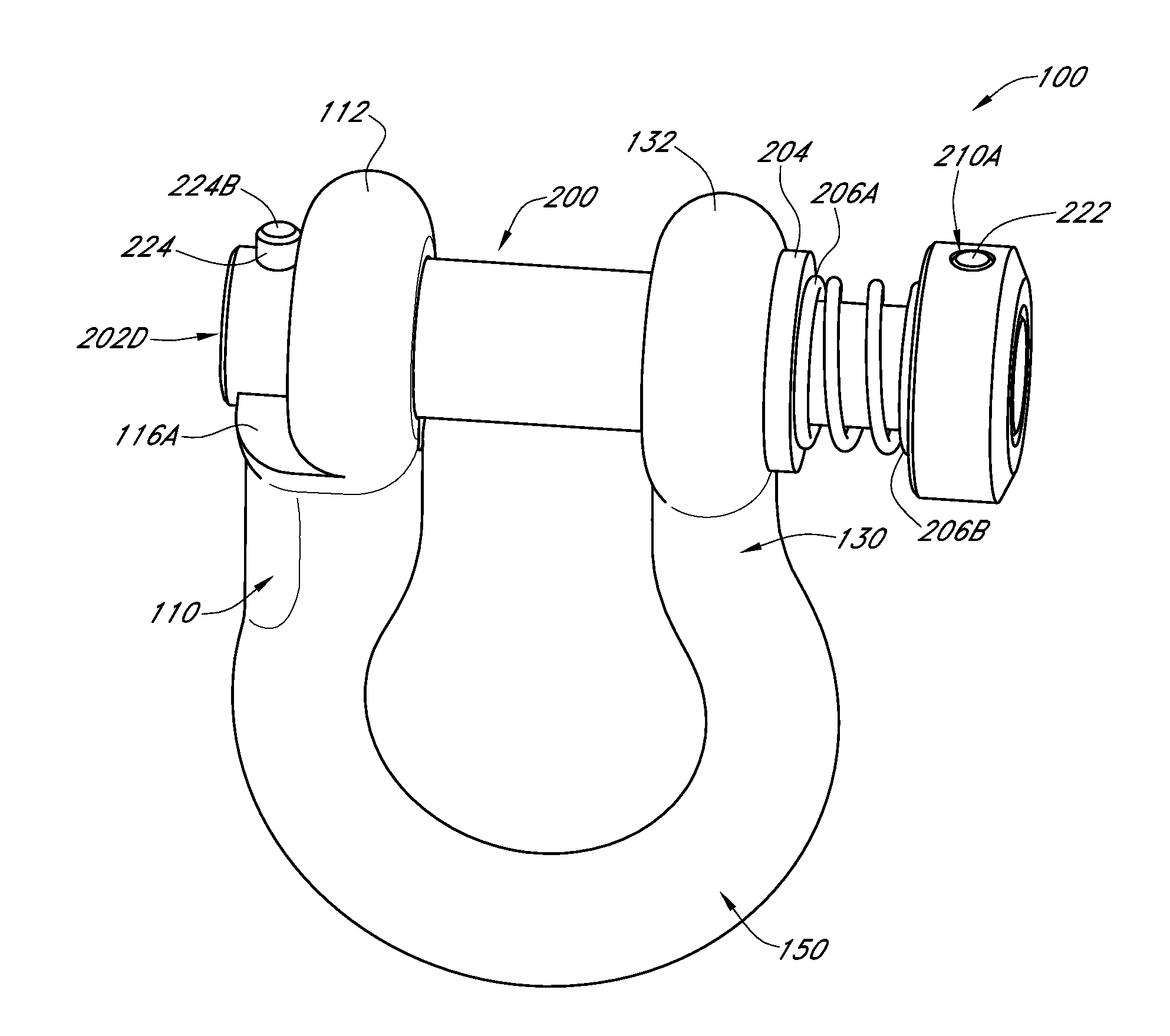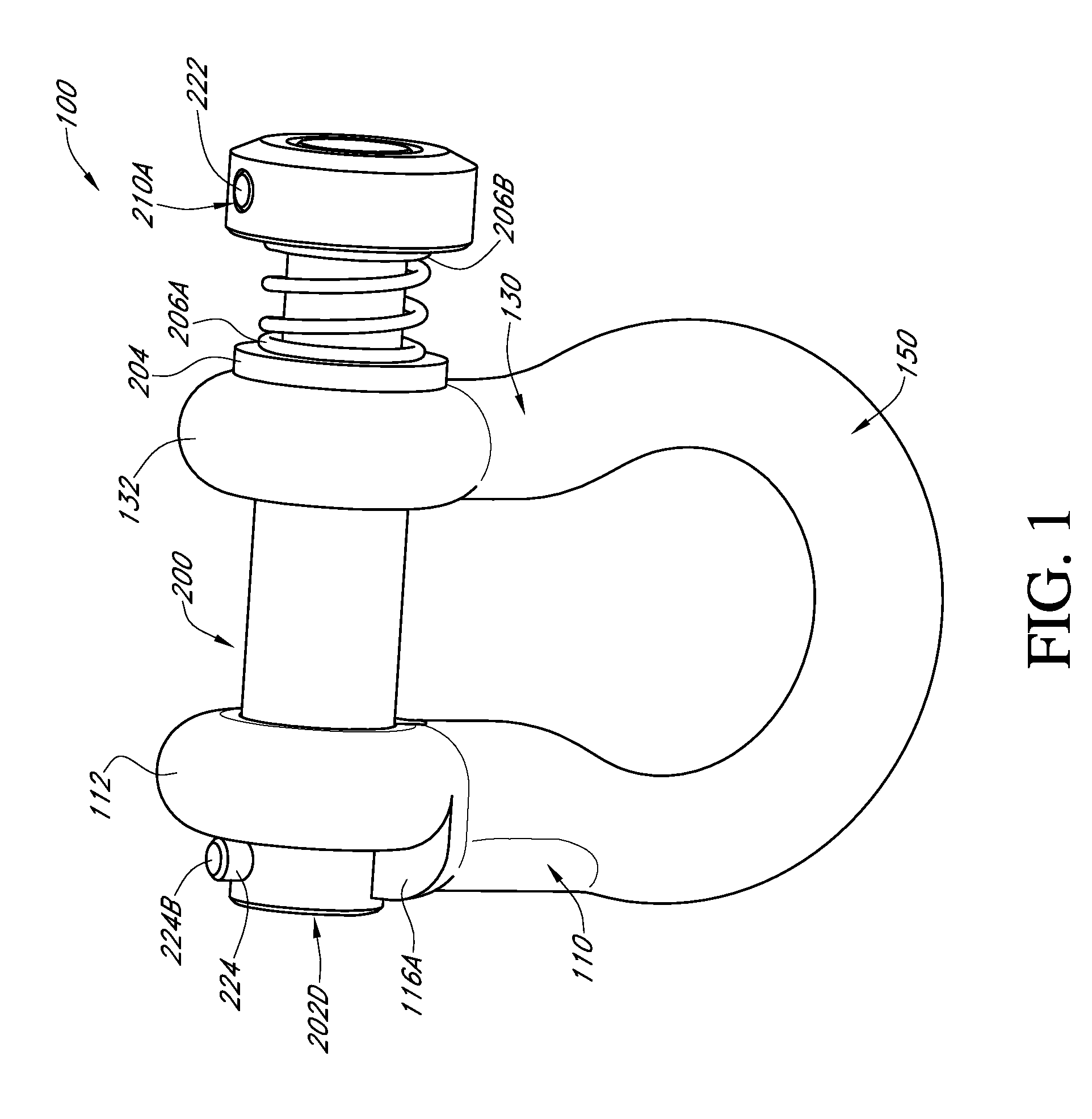Quick Release Fastening System
- Summary
- Abstract
- Description
- Claims
- Application Information
AI Technical Summary
Benefits of technology
Problems solved by technology
Method used
Image
Examples
Embodiment Construction
[0020]Embodiments of the present invention provide systems and methods for quickly and conveniently securing two or more objects to each other. FIG. 1 shows one embodiment 100 of a quick release fastener in accordance with the teachings of the current invention. As can be seen, the quick release fastener 100 has a first leg 110, a second leg 130, a connecting member 150, and a closure element (or “locking pin”) 200.
[0021]The first leg 110 and the second leg 130 are connected to each other (e.g., at respective distal ends) by the connecting member 150. The legs 110, 130 and the connecting member 150 are shown in the drawings as collectively being C-shaped. People of skill in the art will appreciate however that the elements may be of other shapes so long as a substantially uninterrupted perimeter is formed from a proximal end of the first leg to a proximal end of the second leg (e.g., U-shaped). The connecting member 150 may be made of wrought iron, galvanized carbon steel, metal all...
PUM
 Login to View More
Login to View More Abstract
Description
Claims
Application Information
 Login to View More
Login to View More - R&D
- Intellectual Property
- Life Sciences
- Materials
- Tech Scout
- Unparalleled Data Quality
- Higher Quality Content
- 60% Fewer Hallucinations
Browse by: Latest US Patents, China's latest patents, Technical Efficacy Thesaurus, Application Domain, Technology Topic, Popular Technical Reports.
© 2025 PatSnap. All rights reserved.Legal|Privacy policy|Modern Slavery Act Transparency Statement|Sitemap|About US| Contact US: help@patsnap.com



